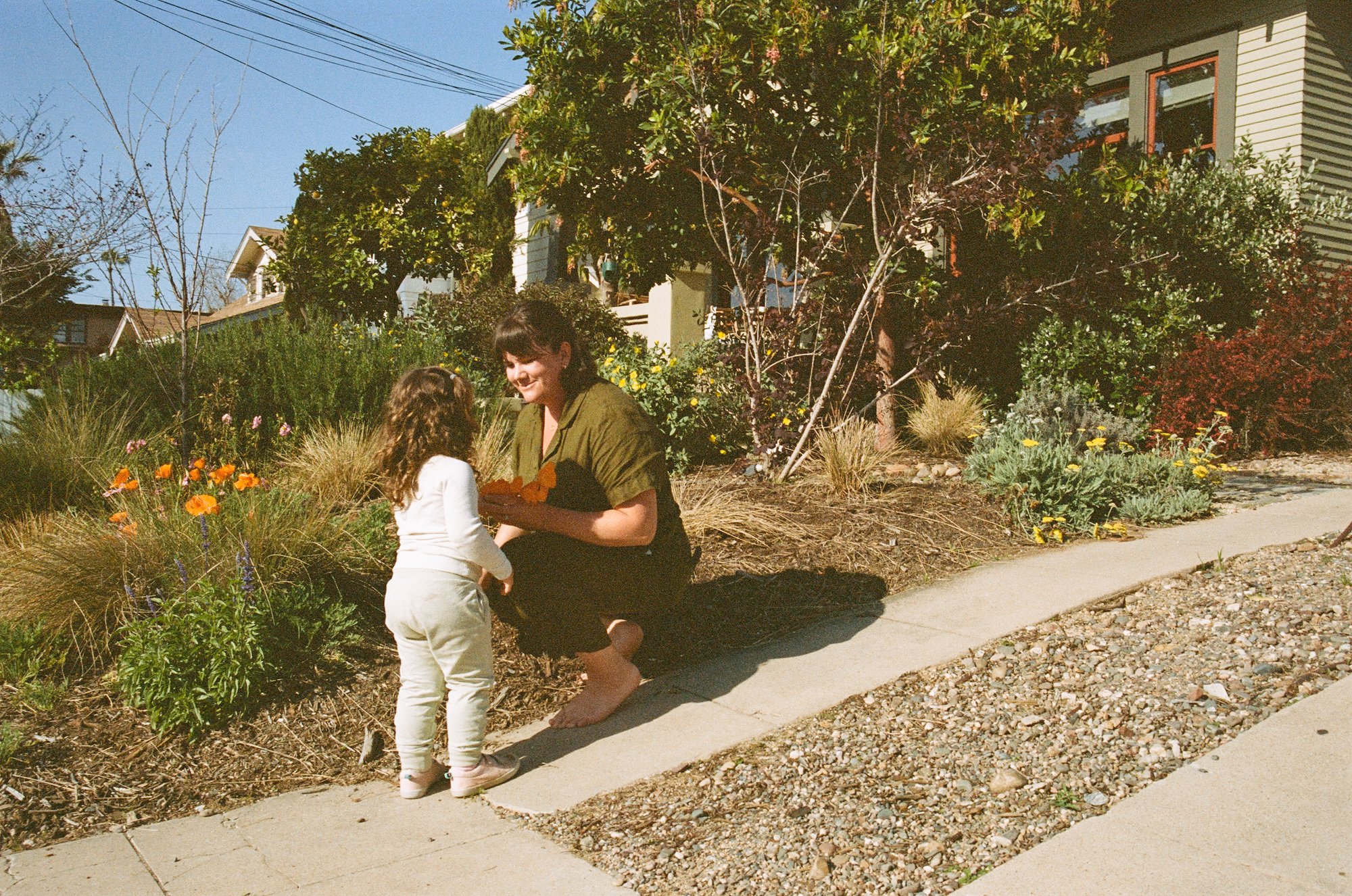Our Mills Act Tax Savings + The Secret Calculation & Some Financial Transparency
/I shared awhile back that our home was designated historic - yay! I already went into the nitty gritty of how we got our home designated, what it means to be designated, what Mills Act is, and the pros and cons of how it affected our home in this blog post. Give that one a read first or else this post will be confusing.
So, I’m here to update you on where we’re at in that process and also share some nitty gritty finances with you. If you’re thinking about applying for Mills Act, this post is for you. If you like snooping on other people’s finances, this post is also for you.
To back up, here’s a brief timeline of events - for fun and to give you a better idea of the saga. Our neighborhood earned historic designation in October of 2017. Then, a resident fought the Historic Resource Board because he didn’t want his house included which meant all of our neighborhood designation was put on hold. There were several hearings and ultimately this guy and a couple other upset neighbors had their homes removed from the neighborhood designation, and all of us excited folks got our homes cool historic titles. But! This all happened in the winter of 2018 so by the time the hearings were over, everyone missed out on the January deadlines to apply for Mills Act (remember, read this blog post to know what this special tax-savings program is). The neighborhood was PISSED. Luckily, the fine people at the City said we all could apply retroactively, so everyone did a mad dash to submit our applications. Like, really mad dash. I was one of the last people to submit, and I think it’s safe to say you all know that I love making spreadsheets and researching and getting paperwork turned in, so the notion that almost everyone else beat me is baffling. It’s worth noting that the City can run out of funding if they get too many applications, so being last in line could have cost us.
Anyway, this was the spring of 2018, then in October of 2018 we got word that we were awarded with Mills Act! We went to the City and signed a contract in November of 2018 and we were officially in business. Since that date in November, we’ve been in a contract with the City of San Diego to do select repair jobs to the house and also follow their guidelines which included getting all jobs permitted. (I got a construction permit since getting Mills Act and shared about that here.)
Basically, it took us a year to get all of our ducks in a row. I spelled out that timeline because we’ll come back to in later.
After our November signing, the necessary paperwork was submitted to the State of California Office of Historic Preservation and submitted to our County Assessors Office. Then, we waited to find out how our property taxes would change. (Read this post about our designation and Mills Act to see why we’re getting a tax savings).
We were really anxious to find out what our potential Mills Act savings would be so we dug around to figure out what the calculation is. There’s an equation that the assessor will tell only OVER THE PHONE so we called, left a message, waited for a call back, got a call, then ferociously scribbled down a bunch of words that would have been so much easier to digest had they been emailed to us, or better yet been made available online for everyone to calculate at whatever hour of the day they so please. Well people, I’m here to share the equation with you (and no, I’m not the first person to put this on the internet, and no I’m not giving away any government secrets).
In an essence, what the City does is re-assesses the value of our house based the lowest result of one of three equations. The most popular equation is the one we fell into which is: the net income we could make if we were to rent out our house divided that by the capitalization rate. The number that comes from this equation is our newly assessed value of the property from which property taxes are applied.
Here’s the calculation we used:
(Monthly Rent Potential x 12 months) - Expenses = Net Annual Income
($3,000 x 12) - $5,000 = $31,000
Interest + Historic Risk + Amortization + Local Property Tax Rate = Capitalization Rate
4% + 4% + 0.8% + 1.175% = 9.975%
Net Income / Capitalization Rate = New Valuation
$31,000 / 9.975% = $310,777
New Valuation x Local Property Tax Rate = New Estimated Taxes Owed
$310,777 x 1.175% = $3,652
How we got some of those numbers:
Each year the State determines the Interest Component (2013 = 3.75%; 2014 = 4.0%; 2015 = 4.25%; 2016 = 4.25%; 2017 = 3.75%; 2018 = 4.0%). A Risk Component of either 2% or 4% based on owner occupancy status (Owner Occupied Single Family Dwelling = 4%; All Others = 2%). A property tax rate component (which will be 1.XXXXX% depending on Tax Rate Area; a flat 1% can be used for estimation purposes). And an amortization component (based on building ratio & reciprocal of estimated remaining economic life of improvement/building; Can typically range from 0.5-1.0%).
So, with this calculation we expected to owe $3,652 in taxes under Mills Act. But, we were only guessing at the numbers so we had to wait until we got our property tax bill. Well, we got the number last week.
Drumroll…
Our home’s new valuation is: $245,254
Which means we are now going to pay in taxes: $2,881
Which means we are going to save annually from our previous tax payments: $5,401
Some of you may be rejoicing with us at the thought of how much we’re saving. Some of you may still be grappling with the thought of how much our property taxes are. Yeah, 1.175% is a lot (plus state, federal, and sales tax) but I also don’t have to pay to have my driveway plowed in the winter. And there’s also a ton of other perks of being in California, too.
So, we’re expected to save $5,401 in property taxes every. single. year. Now, this can change if our property tax rate changes or if the Assessor re-evaluates our home. Since I've submitted construction plans for our newly remodeled kitchen and bathroom addition to the City, they calculated a semi-random dollar amount of added value to our house and it’s been recorded at the Accessor’s Office. So our valuation next year might be greater because of this reported addition in value - but we’ll see.
Update: we paid $2,926 in 2022, so we’ve only seen an increase of $45 since writing this post in 2019.
Before you get excited and ask, “what are you going to spend that money on?!” Remember that this tax savings is designed to go back into the house to maintain the historic home. And maintaining an old home is pricey - extra pricey to do it right. So this savings will go to the $5k I’ve already paid at the City to get my kitchen permits, and the $1k I spent on historic chimney restoration, and the $3k on custom historic windows, and the $250 Mills Act application fee, and the $350 historic plaque, and on and on. We’ve put a bunch of money into this house over the last few years, and we’ll continue to for many more years, so this will help. PLUS, we’re not making money, we’re just not spending the money. Perhaps though we will use the savings to spend our money a bit differently. Perhaps we’ll pay down a bit more of our mortgage principle this year, or we’ll donate more to social service organizations and community schools that rely on state funding. (I’m definitely feeling guilt getting such a steep savings and not having those funds support important local causes.)
Here we are four years into owning our little home. It’s now Historic, and now it’s just a little bit easier to fork over the extra cash for custom millwork and restoration. Whew. Plus, our house’s resale value increases when new homeowners see how much they can save (Mills Act is transferable) but we aren’t selling anytime soon, people!
A cool part of earning the designation is we get to display a pretty plaque by our front door! This is an optional item that homeowners can buy ($350-$500) to show off how cool their house is, but it’s mandatory if the home is a part of Mills Act. We jumped at the opportunity to dress up our house just a bit.
The plaque is solid bronze (please don’t come steal it) and it’s unique to our home with our historic site number (which I’ve blurred for privacy - and so you don’t come steal it). If we had our home designated independently (rather than through the neighborhood) it would say the name of our house which often is the name of the first homeowner or the architect/builder.
Did you make it this far? Congratulations for reading all the way through what some will probably consider the most boring and inapplicable blog post I’ve ever written. Or the best post ever?




























